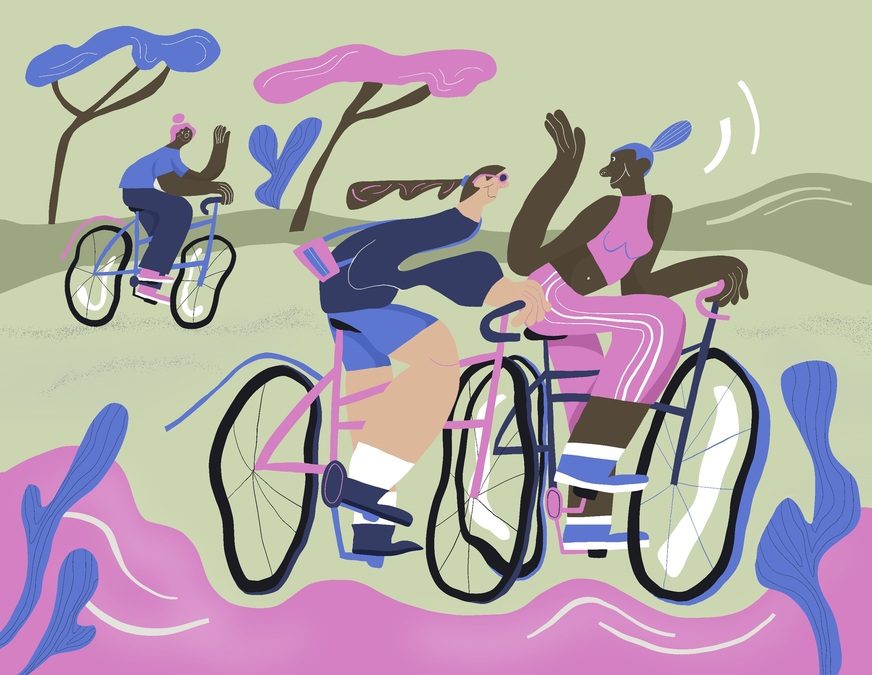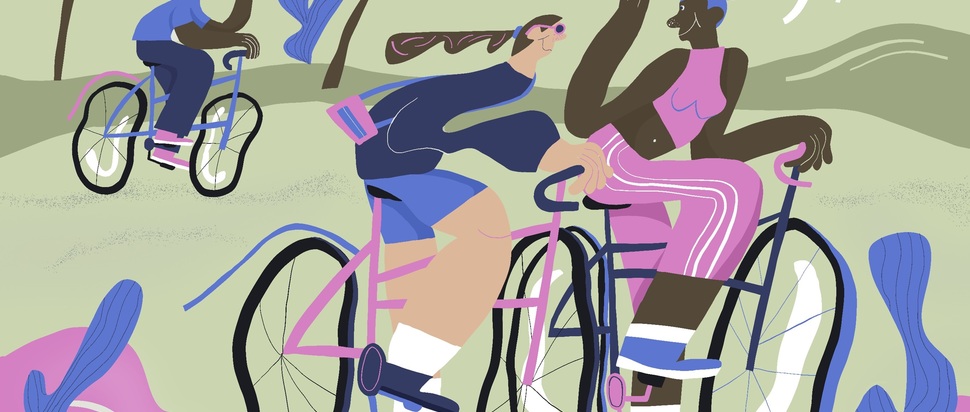Cycles of Change: Glasgow’s cycling gender gap
Riding a bike is no mean feat. One writer unpacks the need for gender equality in active travel and what support is available for women taking on the path less cycled
Sophie Morrison doesn’t cycle to work. “The area I live in is not the safest place for a woman to cycle alone,” says the young professional, who lives in Cumbernauld and works in the west end of Glasgow. Upon learning that it would take roughly the same amount of time to cycle to her job as it does to commute via bus, she ponders whether she could.
Like Sophie, an estimated 29 percent of women do not cycle regularly but would like to, according to Sustrans’ 2023 Walking and Cycling Index, with perceived danger being the top reason people who want to cycle choose not to. The data also reveals a gender gap in cycling in the UK, with 21 percent of men cycling at least once per week, compared to only 10 percent of women.
“If there was a group of women cycling to Glasgow from Cumbernauld, I would definitely join them,” Sophie says. It’s something many cycle trainers and women’s ride leaders understand: women generally feel safer in numbers. And in Glasgow, numerous organisations and initiatives seek to meet the needs of women so that they feel safer cycling.
Carol Thompson, a founding member of Glasgow Gals, an all-women’s recreational cycling club, says, “We have women in our club who would not still be cycling if it weren’t for the club.” Glasgow Gals, formed in 2017, has capped membership at 160. Carol says they could easily triple that number, highlighting an appetite for women-centred cycling. Keeping membership relatively low, however, encourages active participation and builds a sense of community with strong social connections. The success of Glasgow Gals is in part down to rides that are tailored to the needs of women. While lots of cycling clubs for men and mixed genders exist, women-only clubs are rare in Scotland.
When Carol, who is also the project manager of Sunny Cycles – a charity that seeks to enable people of all ages and abilities to take part in cycling – is asked for advice on how to make cycle rides more appealing to women, she has counter questions to ask. Do you plan toilet stops? Do you wait for slower riders or charge ahead, leaving them behind? “It’s a different way of planning,” she says. The Glasgow Gals rides are carefully planned, set at a moderate pace, and include a cafe stop. “We have a slogan in the club: no cake left behind.”

Illustration by Zofia Chamenia
The very term ‘cyclist’ can conjure images of a Tour de France racer, a very fit man—probably white—decked out in Lycra and postured aggressively on a road bike. But the Glasgow City Council has adopted an active travel strategy that seeks to make “walking, wheeling and cycling the first and natural choice for everyday journeys, for people of all ages and abilities.” Changing that vision of cycling from a male-dominated sport to one of an everyday activity for anyone takes time and concerted effort, but the benefits to cyclists and society are wide-reaching, from increased health and wellbeing to reductions in pollution.
Among the priorities listed in Glasgow’s Travel Behavioural Change Strategy, training for cycling is a short-term priority focus area, utilising partnerships with local organisations to teach everyone to cycle competently on roads, something women often prefer to avoid.
Anne Glass, project manager for Drumchapel Cycle Hub, has led a successful women’s Monday evening ride since August 2016. She acknowledges that behaviour change, while sometimes slow, is possible. “Many of the women would not go out cycling themselves, especially in the evenings – some wouldn’t even walk alone in the evenings,” she says. “Even I didn’t go out on my bike much in the evenings until I started the evening ride, and now it’s no big deal to me. But it takes a long time to build up to that.”
Anne’s approach is to create a safe space to allow women to get outdoors on a bike and build confidence and skills, acknowledging that women with lower socioeconomic status are even less likely to have time or money to cycle. Through funding, she is able to keep the costs of skills lessons, equipment rental and repairs extremely low or free. She also works with Community Links Workers to get people cycling and build community. A number of Glasgow-area cycling charities operate similar models for all people, often with sessions specifically catered to women and people of marginalised genders. In addition, Anne has also trained as a bike mechanic, which she says gives her more confidence leading groups of women because she knows she can fix mechanical problems that might arise.
Sophie has since gathered the courage and curiosity to try cycling. She found a bike abandoned by a family member in the garage and cycled around the park. “I hadn’t been on a bike since I was 16,” she says, adding with a laugh. “I’m cycle uneducated.” She’s keen to do more cycling now that the days are getting longer, and she’s learned of car-free cycle paths, and cycling organisations to support her on her journey. Helmet on, bell at the ready – Sophie’s taking on the road.
